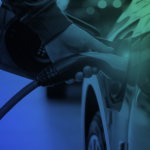How to Sell Cars at a Dealership?
Running a car dealership can be hard work. Not everyone is looking to purchase their first car or upgrade their current one.
With shortages in parts and changes in consumer needs and lifestyles, many people are not looking to buy a car anymore. And those who do may find steeper prices and fewer options. As a result, selling cars at your dealership during this time might be even more challenging.
That’s not to say it’s impossible to sell cars or close more deals. There are definitely potential customers either just starting the research process or are ready to choose a dealership and make a decision. So how can you sell more cars? What are the strategies you have to implement to make your dealership more profitable?
With the right sales tactics and an effective approach to delivering your strategy, you can increase your monthly car sales figures. Read more about some of the ways you can sell more cars at your dealership.
Get Your Sales Funnel Up and Running ASAP!
The sales funnel is a consumer-focused marketing model illustrating the customer journey of someone wanting to purchase a product or service. In this case, it’s someone walking into your car dealership that’s interested in purchasing a vehicle. In most standard sales funnels, there are four stages that customers and your sales team go through – awareness, interest, decision, and action.
You might already have a strategic sales funnel with well-defined procedures in each of the stages. If not, it’s time to get it set up. It’s a useful tool to help you start closing more deals because you can better identify whether customers are getting the help they need at each stage of their purchasing journey. For example, if you aren’t nurturing every lead properly by providing a contact form or following up on partial leads, your dealership is losing valuable opportunities right at the start of the sales funnel.
Setting up your sales funnel also helps you better understand your potential customers and choose an effective marketing strategy. Throughout the customer journey, you have opportunities to gather useful insights about your customers. These insights include the age of your customers, the number of new or returning customers, where your customers are located, how many people leave the sales funnel, and how many sales your team completed each month. Once you have all this information, you can start refining your marketing strategy to better communicate with customers and pull them down the sales funnel to the commitment stage.
To start your sales funnel, start by analyzing your customers based on the insights you have. The more you study your audience, the more relevant your sales funnel and marketing strategy will be. Next, create specific locations that capture your audience’s interest. The information and resources you include on your landing page depends on the type of audience it’s meant for.
For example, you could create a landing page that directs visitors to visit your website or submit their contact information if you’re trying to target people that are past the initial research phase. If you’re trying to educate people in the process of purchasing from a car dealership, you might include blog links, FAQs, and diagrams. You can also incorporate automated emails to keep leads continuously interested and informed, hopefully transitioning them to the decision stage.
Once someone reaches the decision stage, your goal is to convince them to make a purchase. You might spend more time showcasing the different cars in your inventory that meet the needs of your customer. You’ll walk them through the financing and leasing options available, as well as any additional maintenance services you provide. The more you focus on personalizing the decision experience, the more likely your customer will make a purchase
Finally, we reach the action stage where the customer pays for the car – congratulations on making a sale! But your job doesn’t end here. A big part of the action stage is how your sales team works on customer retention. Express your gratitude and follow up with them to see how they’re doing. The goal is to get these people to come back again in the future, or at least refer your dealership to their family and friends.
Becoming a Good Car Salesperson
Being a good salesperson is about knowing how to build personalized connections with each customer.
- Remember the names of your customers
Make them feel like more than a simple business transaction. You want to cater to their pain points and concerns throughout the purchasing journey by speaking directly to them. Using your customers’ names makes the experience more intimate and also makes your sales team appear more friendly. This is important because purchasing a car can be a stressful and long process and you want to make the process seem more friendly and familiar.
- Don’t be too pushy
While your job is to close as many sales as possible, you don’t want to scare away the customers. Listen to what the customers want and what their interests are. When interacting with a salesperson, customers almost always prefer communicating with someone that listens more than they talk. You want to show that care about what your customers say and give them time to formulate their thoughts. Pause every once in a while so your customers can digest what you’re saying and ask questions.
- Express gratitude
Remember to always thank your customers. Last impressions are just as important as first impressions, as you want their last impression of your dealership to be a great one. Whether you want to offer them a handshake or just express your gratitude, it’s important they know they are appreciated and welcome to reach out at any time with questions. You might also consider offering small treats, such as chocolate, to wrap up their purchasing journey nicely.
- Always follow up with customers
After you sell a car, you want to focus on customer retention. Customer retention is just as big a part of the customer’s purchasing journey as finalizing the car purchase. Before your customers leave, let them know you’ll be following up with them and stick to it. It’s up to you how frequently you want to follow up with your customers to see how they’re doing and offer your services or address their concerns. You could also send quick emails or text messages during the holidays to express your good wishes. This helps continue the relationship you built with each customer and keeps you in their minds should future needs arise.
- Train your staff
Having a great team of staff makes the selling process much easier and smoother. Customers like interacting with salespeople that are professional, knowledgeable, transparent, and empathetic. But your staff also includes your service and administrative team, and customers have the same expectations when interacting with these people. Frequently train your staff on sales strategies, including the use of eye contact, effective communication tactics, how to offer personalized experiences, and avoiding untrustworthy language. It helps your staff continuously improve the way they do their jobs. It also helps your car dealership improve the way they handle the entire customer journey to provide a better experience that generates more sales.
Leverage Data Wherever You Can
When it comes to improving, data is your best friend. It tells you what the current sales figures are and helps you identify whether you’re reaching the performance you want. Data tells you about how many leads you’re getting, how many leads each channel generates, how many partial leads you have, and how many sales you get each month. Once you have this information, you can determine which processes in your sales funnel need to be revised.
taq Automotive Intelligence helps you integrate leads, credit, and portfolios in one innovative platform. Whether it’s tracking lead history, pushing a lead to the credit platform, assigning leads to different parts of the sales process, or organizing all your appointments and tasks, taq Automotive Intelligence lets you do it easily and effectively. Having a single platform to manage the customer journey gives you better transparency into what your dealership is doing to nurture more leads. It also allows your staff to follow up easily with customers or escalate any issues to the necessary resources. As a result, your staff becomes more efficient and responsive which allows your dealership to sell more cars.




